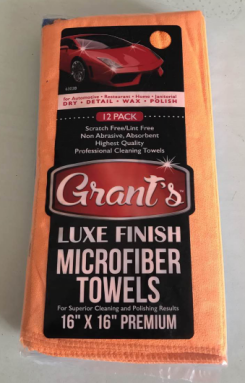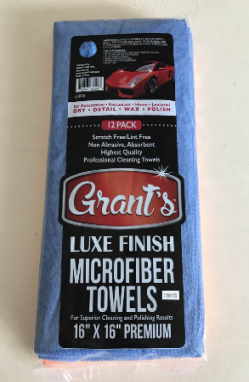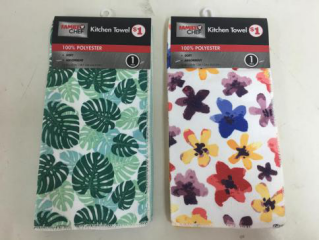1. Dilute the ink to make the ink lighter and dull, affecting the color of the printed product. If we use the method of increasing the amount of ink to save the ink color, it will cause the ink to be large and the water to be large, making the image thick and fuzzy, and the imprinting is not clear.
2. Cause ink roller to deink. In severe cases, there will be accumulation of moisture on the entire ink roller, so that the graphic part of the printing plate will not be supplied with the normal amount of ink, causing the plate graphic to “fabricateâ€.
3. Affect the drying of the blot. If the ink is mixed with excessive moisture, the ink drying will be inhibited. Together with the absorption of more moisture in the paper, the product will dry more slowly.
4. The paper fiber absorbs too much moisture, which will cause deformation, resulting in inaccurate overprinting. It will also loosen the texture of the paper, seriously affecting the quality of printed products.
5. The ink emulsifies and the ink loses its viscosity. After the ink is emulsified, it can't protect the printing plate picture and text, it is easy to cause "flower plate", at the same time it will reduce the printing plate's resistance to printing force.
Through the above analysis, it is illustrated that the balance between ink and ink is a key link in offset printing. In addition to the experience of the operator, it is more important to master the correct use and adjustment of the offset printing machine's water delivery mechanism. I will briefly introduce how to use and adjust the water delivery mechanisms of the J2108, J2203, and J2205 offset presses produced by the Beijing People's Machine Factory.
In order to adapt the water supply capacity of the water delivery system to the requirements of the printing production, the water delivery system is provided with a device for controlling the moisture and regulating the amount of water. This can be divided into three parts according to the nature of their work: First, the water supply device; Second, the uniform water device; Third, the water supply device.
The water supply device mainly consists of a water tank, a fountain roller, and a water transfer roller. The sink is used to store water, and there is a water bucket roller (also called water outlet roller) at the upper part. The lower half of the fountain roller is immersed in the fountain solution. They do not touch each other and do not support each other. In addition to automatically adding water to the water (it has been used by many manufacturers), it is also possible to add water manually. Manually adding water requires the operator to constantly add the previously prepared solution to the sink. Since the amount of water supplied in the fountain roller is related to the height of the fountain solution, the water supply must be uniform so that the fountain solution in the sink must maintain a certain water level. The operator can't be impatient when adding the water bucket solution. Slowly add the water bucket solution to the water tank, and do not swing the solution in the water tank. If it is shaken up, the local moisture will suddenly increase during normal printing, which will affect the quality of the product. Second, the water bucket solution will be sprinkled on the front part of the sink, resulting in abnormal feeding and clutch pressure (this is because The solution drips into the front teeth of the gauge to form a conductive layer; the third is dropping onto the printed product, resulting in spots on the paper, which are likely to appear double when printing.
The water transfer roller, also known as the draught roller, is a rubber roller installed between the water roller and the water roller. The regulation requirement of the water transfer roller is that the draught should be kept in parallel with the water roller, and there is an appropriate pressure, which is regulated by the tension springs on both sides. The tension of the tension spring must be kept constant during adjustment to ensure that the water transfer roller works in parallel with the water roller during draught. When the water is supplied, it depends on the cam. When adjusting, the water transfer roller must be leaned on the string water roller and there is proper pressure. On both sides of the water roller there is an adjustment screw and a positioning backing. The adjustment also requires that the transfer roller and the skewer roller are parallel. The water transfer roller also has a draft device for draught. When the pressure is applied to the printing, the normal draught feed water is oscillated back and forth through a 0.7 kg iron suction of 220V. When the pressure is released, it stops swinging back and forth, that is, no longer depends on the outlet roller. The buttons for controlling the water supply and water supply on the operation console are to control the iron absorption. They work according to the production conditions. In normal printing, we sometimes find that the pressure of the platen becomes larger after the pressure is released. why? This is because after the iron work is stopped, the pulling force of the top claw puller next to the iron sucker is not enough, and the roller is still draught after the roller is separated from the pressure. The machine stops the draught after running one or two turns. The force of the claw pull spring is not enough, causing the suction iron to retract slowly one or two beats. This is the reason that caused the layout moisture to increase. To solve this problem is very easy to do, just replace a new tension spring or shorten the old tension spring by one or two.
The water distribution device is mainly a series of water rollers. It is usually made of a corrosion-resistant metal material. In order to achieve uniform water on the water roller, the water roller has not only rotary motion but also axial motion. The surface speed of the skewer roll is equal to the surface speed of the plate to keep the platen roller moving at equal speeds. The axial movement of the string water roller is adjusted by the eccentric link, which is relatively simple and does not need to be adjusted in the printing process under normal circumstances.
The water supply device may be referred to as a plate water roller or a water roller. Generally uniform for the two rollers, the surface of the water transfer roller is wrapped like a good absorbent water roller velvet. The role of the reel water roller is to evenly transfer the aqueous solution from the water transfer roller and the string water roller to the printing plate. Its surface speed must be equal to the speed of the printing plate surface. It is not allowed to have axial turbulence and radial runout, otherwise it is easy to cause damage to the printing plate. The requirements for adjusting the reel water roller are relatively high and must be adjusted according to the steps. Adjust the eccentricity first, so that the pressure between the plate roller and the skewer roller is just right. Then adjust the cone head so that the pressure between the plate roller and the printing plate is appropriate. The above method of operation is to explain that when the eccentricity is adjusted, not only the pressure between the plate roller and the string water roller but also the pressure between the plate roller and the printing plate will be affected. When adjusting the cone head, only the pressure between the plate roller and the string roller is changed, and the pressure between the plate roller and the string roller is constant. When adjusting the plate roller, the nozzle roller should be adjusted first. Adjust the upper water roller. The pressure of the upper water roller is better than the pressure of the lower water roller, because it can use the upper water roller to collect excess water on the plate, which is an experience gained from practice. When adjusting the pressure of the printing roller, special attention should be paid to the position of the adjustment eccentric at both ends. If the difference is too large, the position of the printing roller and the printing plate and the string of water rollers will not be parallel, and the problems of loosening and tightness between the two ends will be easily generated. . Therefore, when adjusting the water roller, it is necessary to use the method of correcting the center distance to measure the two ends and the middle three points to prevent the water roller from being in parallel. The contact pressure between the printing roller and the printing plate cannot be too heavy. Otherwise, the plate friction force will be increased and the printing plate will be subject to wear. This will make the plate “texture†and the printing force reduced, and it will also cause the water roller and printing. When the touch occurs in the touch screen, the jumped parts are dirty, and the parts that fall again have "water bars" (ie, white bars). However, the contact pressure between the plate roller and the printing plate should not be too light, which may cause the plate to be insufficiently supplied due to insufficient moisture supply. If inappropriately increasing the amount of water, it will cause the layout water to be too large. So how do you determine if the contact pressure is in the optimal adjustment position? According to the experience, by pressing the water roller and the plate together, the machine is turned on, and then the plate holder is pressed by hand to determine if there is a beating phenomenon during operation. Since the plate cylinder has the difference between the printing surface and the neutral position, the pressure of the contact pressure of the printing plate roller is easily felt. Under normal circumstances, the feeling of a slight jump is the most appropriate. If the jump is serious, it means that the pressure is too heavy. Then you should adjust it again.
To adjust the water transfer mechanism, the following work must be done: First, the pad of the printing plate should meet the standard; second, the water solution in the water tank should be free of impurities; third, the water roller must be changed frequently; and the fourth is the water roller and string water. The rollers must be cleaned and must be kept clean.
Excerpted from "Printing Equipment and Equipment"
Cleaning Towels
Microfiber Cleaning Towels, supersoft handfeeling,quick clean,easy to use and bright colors.We have different kinds of towels,such as microfiber cleaning cloths,microfiber polishing towels and classical red shop towels.
Item No.:DMT17-K001
Description: 12PK Microfiber cleaning cloths,6pcs blue color,6pcs orange color
Material: 85% Polyester,15% Polyamide;
Size:16"x16",
Weight:45g/pc
Moq:5000PK,
Packing:12pcs/pk,12pk/ctn;43X23X43cmcm,7/6kgs
Payment:T/T 30% in advance,T/T 70% at B/L copy after shipment or L/C at sight.
Production leadtime is about 40days.
Delivery:Shanghai port.


Item No.:DMT17-K002
Description: 4PK Microfiber cleaning cloths,2pcs print,2pcs plain color;
Material: 100% Polyester
Size:15"x25"
Weight:23g/pc;
Moq:10000PK
Packing:4pcs/pk,36pk/ctn;32x48x48cm,12/10kgs;
Payment:T/T 30% in advance,T/T 70% at B/L copy after shipment or L/C at sight.
Production leadtime is about 40days.
Delivery:Shanghai port.

Cleaning Towels
Microfiber Cleaning Towels,Microfiber Cleaning Cloth,Cotton Terry Cloth Towels,Microfiber Polish Towels
NANJING DUOMIANTI IMP.&EXP.CO.,LTD. , http://www.chinanjdmt.com